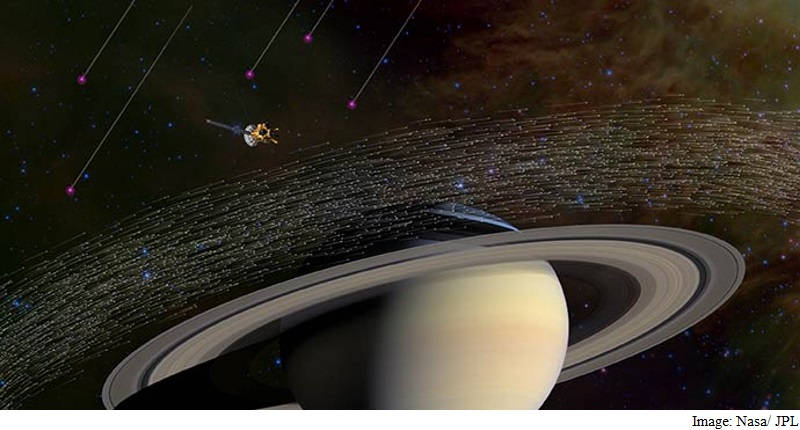NASA’s Cassini spacecraft for the first time ever, has detected, and analysed interstellar dust coming from beyond our solar system.
Cassini has been in orbit around Saturn since 2004, studying the giant planet, its rings and its moons. It has also sampled millions of ice-rich dust grains with its cosmic dust analyser instrument.
The spacecraft detected 36 tiny grains among millions streaming through space – but the discovery is exciting NASA researchers, as the particles are of a uniform composition that has never been seen before.
The grains all had a surprisingly similar chemical make-up, containing major rock-forming elements like magnesium, silicon, iron and calcium in average cosmic proportions. However, they contained less sulfur and carbon than is found elsewhere.
The uniformity of the composition of each grain surprised scientists and they concluded that the specks of material came from interstellar space, i.e. the space between the stars.
“Cosmic dust is produced when stars die, but with the vast range of types of stars in the Universe, we naturally expected to encounter a huge range of dust types over the long period of our study,”
Frank Postberg of the University of Heidelberg said.
The scientists speculate that the dust captured by Cassini had been made uniform through some repetitive processing in the interstellar medium, perhaps through shockwaves from dying stars.
“We’re thrilled Cassini could make this detection, given that our instrument was designed primarily to measure dust from within the Saturn system, as well as all the other demands on the spacecraft,”
Marcia Burton, Cassini fields and particles scientist at Nasa said.
“We always hoped we would be able to detect these interstellar interlopers at Saturn with Cassini,”
Nicolas Altobelli, Cassini project scientist at the European Space Agency and lead author of the study that detailed the find added.
This isn’t the first time particles of this type have been detected. In the 1990s, the ESA/NASA Ulysses mission made the first observations of this material which were later confirmed by NASA’s Galileo spacecraft.



